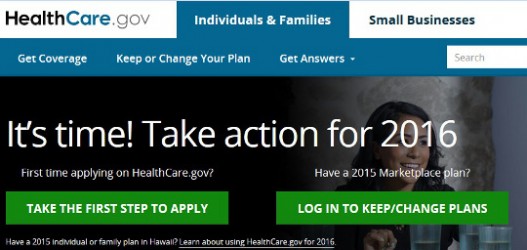If you saw my November RV Life Magazine column, “Health Insurance Options for RVers” you already know that the 2016 health insurance plan options for full-time RVers are horrible. In a nutshell, full-timers based in popular domicile states like Texas and Florida will no longer have health insurance that covers them across state lines.

PPO Insurance Plans are History
Major health insurance providers cite high costs for canceling the Preferred Provider Option insurance plans that enable members to see the doctor, clinic or lab of their choice. From now on, any members of a provider like Blue Cross Blue Shield of Texas will be required get care via a Health Maintenance Organization (HMO) policy. What does this mean for full-timers?
- No more freedom of choice. From now on, we must choose from a limited list of providers within the HMO network.
- No more easy access to care. All requests must be approved by a primary care physician (PCP). Heaven forbid if we want to seek specialty care, because even a dermatology visit must also go through a PCP – which can only happen if you see the PCP in person.
- A primary care physician shortage. PCPs are already in short supply. The doctors currently in HMO networks will have even more patient demand as hundreds of thousands of members switch over to HMO plans.
- No more health care across state lines. From now on, only ER visits that happen out of your home state will be covered by insurance plans but even that’s not guaranteed coverage: if you’re in a different state and your ER visit isn’t an approved “Emergency,” you are looking at footing the entire bill.
The last point is the most dramatic change to full-timers’ health insurance coverage. Beginning in 2016 full-timers must travel to our home states for routine care. Got an aching back? Travel to Texas. Seeing double? Sorry, you’ll need to drive back to your home state with one eye closed.
These changes are stunning and for many who have chronic health issues, a deal breaker for their full-timing dream. I feel terrible for full-timing “dreamers” who need regular medical care because from now on, their long-term RV travel plans are pretty much dead.
In my November column I point out some options full-time RVers have for coping with these changes. The company RVerInsuranceExchange also has a comprehensive guide to these sweeping changes: The RVer Guide to ACA Open Enrollment 2016. I encourage you to read it if you’re on the road now, or about to be.
It would be easy to blame Obamacare for these horrendous changes, but, in all likelihood, health insurance companies would have done this regardless. With escalating health care costs, eliminating freedom of choice was inevitable.
And if you’re thinking of going without insurance, Kyle Henson of Rver Insurance Exchange says think again. “Hey, you still have this option,” he says on his website. “For most people, it’s not going to be the wisest path. Not only is the tax penalty for going uninsured going to be higher in 2016, but being uninsured exposes you to the possibility of medical claims bankruptcy. We do not recommend this route!”
As the saying goes, if you don’t have your health, you don’t have anything. And now, sadly, if you don’t have your health and deep pockets of cash reserves, you also don’t have the option to go full-time RVing either. Truly a sad situation.

I suspect that most full timers are covered by Medicare, and the PPO restrictions encountered in a few states are not applicable.
Hi David. Yes it’s true, the majority of full-timers qualify for Medicare and this is a non-issue for them, but for those of us under 65 (and there are many) it’s a very unfortunate situation.
“Traditional” Medicare ‘medi-gap’ policies have national coverage….offering same coverage in all states….
But the ‘privatized’ form of “Medicare offered thru “Medicare Advantage” policies are not required to offer that national coverage…..So its unclear if they all cross state borders equally well.
So “Medicare Advantage” policy holders best review their policies to confirm coverage, or switch back to Traditional Medicare and get a ‘medi-gap’ policy….to be sure they are getting national coverage….
…
Great point Rand, thank you for mentioning this.
Hi Rene,
I am going to be full time in 2016. I am trying to find out how to get my medications and mail when I become full time. I live with chronic pain and can’t do without meds. I am on disability and receive Original Medicare plus have a supplemental policy with Part D prescription coverage. I am so new to this lifestyle and don’t know a lot about these benefits. Can you suggest anything?
Hi Mary Ann, thanks for reading and asking great questions. I don’t have experience with Medicare, but I do get our meds via mail order which is easy enough. For better ideas about having Medicare on the road though, I recommend talking to other full-time RVers in great discussion forums like iRV2’s Full-timer’s Forum Discussion. Good luck and keep in touch!
Getting chronic pain meds will absolutely be a problem,not because of any insurance issues, but because of the opioid epidemic. Pharmacies, health plans, states and the feds are cracking down. Even if you aren’t on the road, you may be limited to the number of pills that you can get at one time, or the number of refills that you can get without a new written prescription and an in-person doctor visit. Doctors can no longer call in, fax or send electronic prescriptions to a pharmacy. Getting pain killers mailed to you may no longer be allowed, depending on your plan and where you live. I’ve found that these days, getting medication for legitimate chronic pain is a pain unto itself..
In more ways than one, chronic pain is like being on a very short leash.